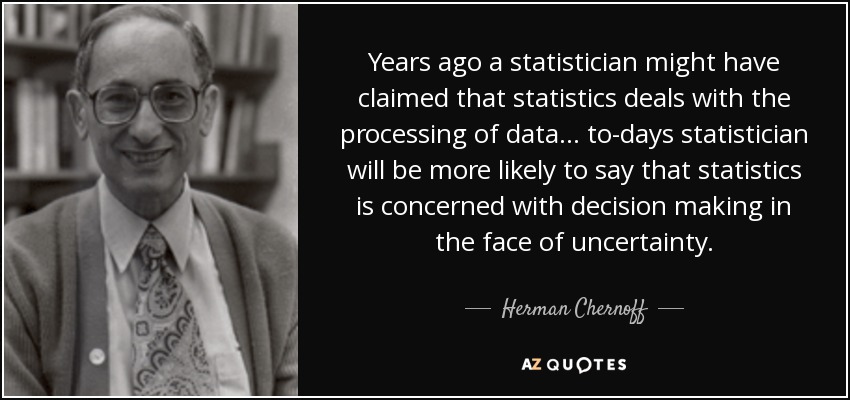Chernoff Faces
Chernoff Faces are a way to visualise many different variables at once. Invented in 1973 by Herman Chernoff (who studied applied mathematics at Brown), they are based on the premise that humans are very good at recognising minute changes in faces. Each measurement of the face, including eye width, head height, distance between mouth and nose and many others, can be mapped to a particular variable. Chernoff faces are therefore a type of glyph, a graphical object whose properties represent data values.
Some features (e.g.: eyebrow slant and eye size) carry more perceived importance, so care must be taken when choosing which variables to assign to which features. Note that this will vary hugely from person to person, causing major differences in how two people interpret the data.
Chernoff faces can be plotted as points on Cartesian co-ordinates, with X and Y as the two most important variables and the features filling in the other details. In 1981, Bernhard Flury and Hans Riedwyl suggested maing the faces asymmetrical, thereby doubling the amount of data that could be stored on each face, but also ruining the basic premise of it being a face.
The main issue with this technique is that its fundamental principle, that face recognition can help us see subtle data changes, isn't true. Our ability to recogise faces is a preattentive capability, and does not assist at all in comparison between different faces, which is a serial search task.
Another huge problem with this method is that one personifies the faces in completely inaccurate ways. A downturned mouth may simply mean that an baseball coach used more pinch hitters, but we will always read it as anger or sadness. One ends up making arbitrary assumptions that are not seen in the data. It can be particularly dangerous when facial proportions result in racial stereotypes being read into the visualisation.
This method is fun, but great care is needed, and there may well be a better method.
 Crime data from all the states of the US as Chernoff faces. It looks like the data used here was not appropriate to the technique, as the faces have come out very similar looking. The key is also extremely difficult to use.
Crime data from all the states of the US as Chernoff faces. It looks like the data used here was not appropriate to the technique, as the faces have come out very similar looking. The key is also extremely difficult to use.

A good example of how meaningless these are without a key.
 Created using 18 different variables, these tests show the maximum, minimum and average faces.
Created using 18 different variables, these tests show the maximum, minimum and average faces.
 Be careful about colour.
Be careful about colour.
 It has been noted that Chernoff faces work better for negative associations than positive.
It has been noted that Chernoff faces work better for negative associations than positive.
